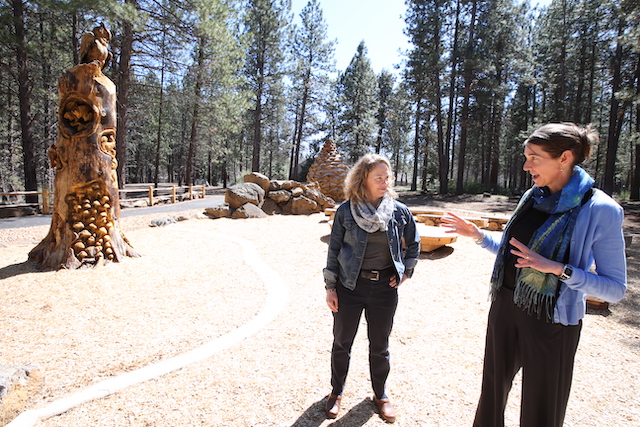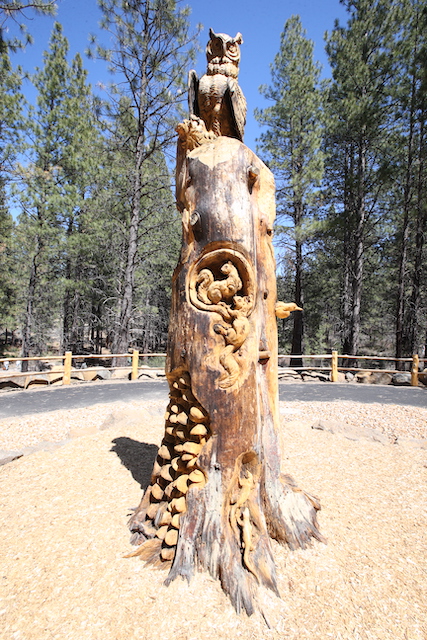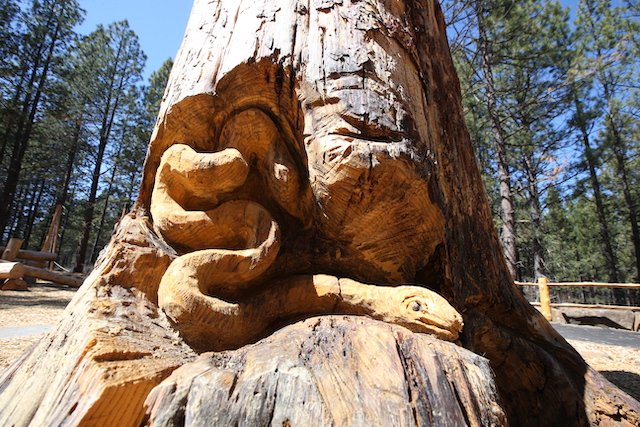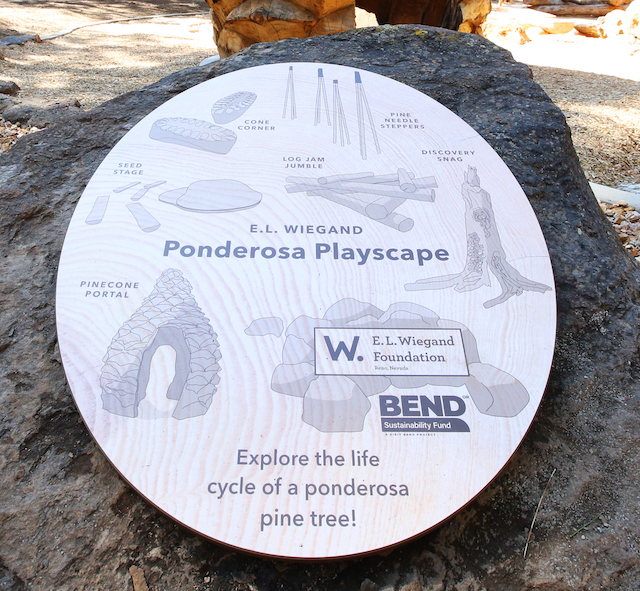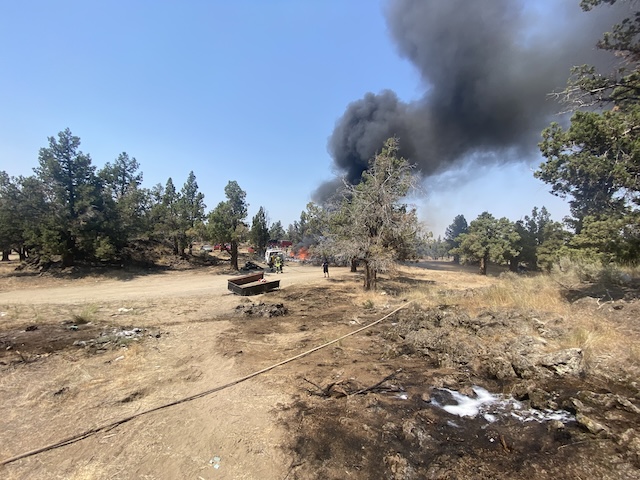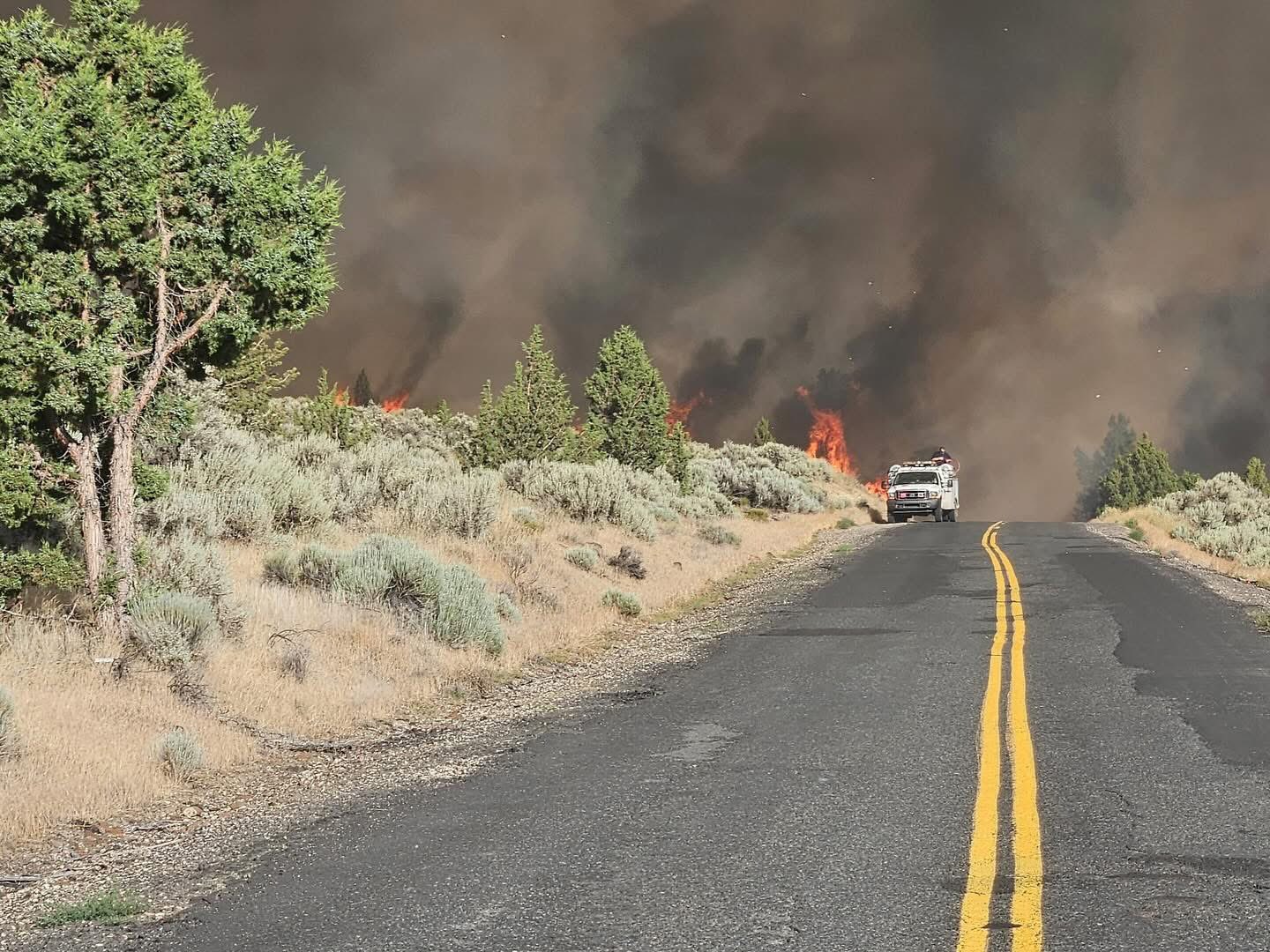High Desert Museum opens immersive play space inspired by ponderosas
Published 1:00 pm Friday, April 18, 2025





Families and children visiting the High Desert Museum have access to a new outdoor play area that is modeled on the ponderosa pine tree. The E. L. Wiegand Ponderosa Playscape opens Saturday, and was years in the making.
The Ponderosa Playscape is an open play area near the museum’s otter exhibit. A large jumble of logs, a huge pinecone you can walk through, benches, a round stage and more fill the space. Wood carvings of different animals cover the Discovery Snag. The area is meant to showcase the life cycle of a ponderosa pine tree.
“I think what outdoor spaces can do for the museum experience is offer a different type of learning environment,” said Dana Whitelaw, executive director of the Bend natural history museum. “Older and adult learners can sit and rest in the forest. It’s so beautiful, just to see the sky, hear the trees and have that kind of immersive learning and immersive experience in the ponderosa pine forest and then kids are actively engaging in the elements.”
Trending
The museum will host a Playscape Party 10 a.m. to noon Saturday to officially open the area. There will be snacks and a craft for kids. The event is free with admission.
Though the museum has had a new playscape on the campus plan for years, it didn’t kick off until 2020 when the E. L. Wiegand Foundation approached the museum and agreed to help fund it. The pandemic forced the project to be put on pause, and organizers resumed work over two years ago, said Whitelaw.
The area was previously home to the Dig, Crawl, Climb exhibit, which was intended for younger children. After opening in 2006, it stayed in place longer than planned, and organizers are excited for the new playscape to take off. The new space is one babies, kids, parents and grandparents can all enjoy together.
“The museum has always put an emphasis on immersive experiences. We want to put our visitors into the place and space that we want them to learn about,” said Whilelaw. “With this nature playscape, building on the theme of the ponderosa pine life cycle, we’re in a ponderosa pine forest ecosystem, so we’re going to go deep with our young learners to explore the elements that make up the life cycle.”
Several of the museum’s curators brought in Sisters artist J. Chester Armstrong to create pieces that would bring the ponderosa pine life cycle stages into a playscape. Armstrong carved the Pinecone Portal, a 12-foot-tall pinecone that can be walked through, and the Discovery Snag. A snag is a dead tree, and the playscape’s is covered with carvings of the animals that make snags their home.
“That can be another one of the strategies at the museum, to have experiences where, ‘my gosh,’ that moment of awe, that inspires curiosity and exploring further. … I think the pinecone does a great job of that, when you’re seeing a larger-than-life pinecone for young visitors,” said Whitelaw. “That’s going to be that moment of, when you have that little feeling of excitement that you’re going to explore something you haven’t seen before.”
Trending
The playscape is the first of several significant renovations the museum is implementing. Organizers have planned expansions of some gallery and education spaces as well as a renovation of the permanent exhibit “By Hand Through Memory.”
“Another one of the strategies for the different play elements is to have some free play, to not completely prescribe behavior that might happen in a more creative space,” Whitelaw said. “There’s climbing on the Log Jumble, there’s creative play that can happen on the stage.”
The new exhibit was funded by a grant from the E. L. Wiegand Foundation, a $100,000 grant from the Bend Sustainability Fund, which is a Visit Bend project, and individual donations. The museum raised over $400,000 for the project, said organizers.
The museum is also changing the landscaping around the playscape, taking out brush, vegetation and trees to make it more of a park setting. Additional native shrubs will be planted to match the landscaping.
“It’s been a long time since we added an element this expansive, especially to the grounds, and the museum has a long-term plan to develop our campus and this is the first part of that,” said Whitelaw.



